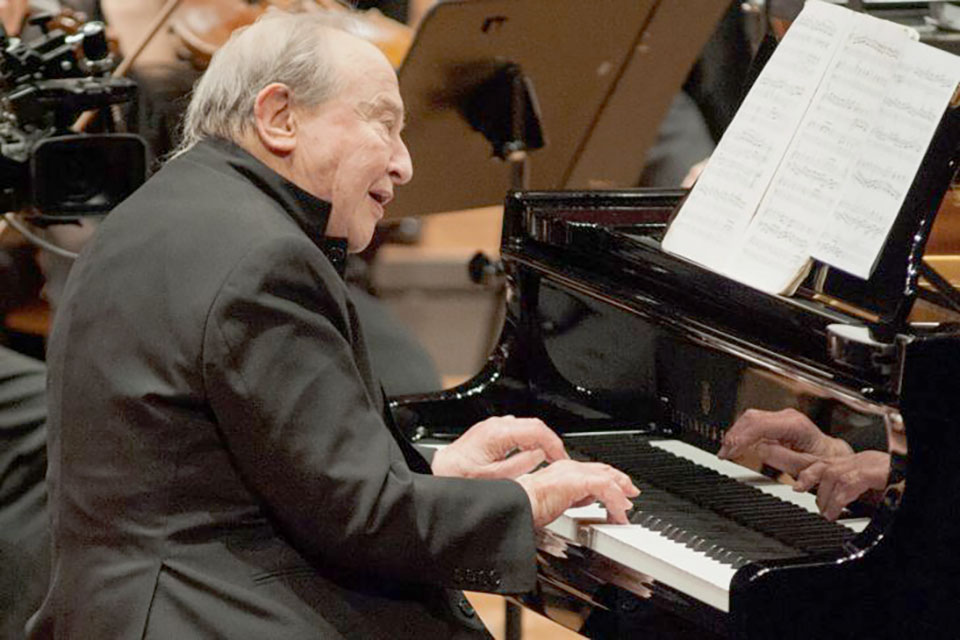
Did I ever tell you that my father used be a singer? He studied at the Royal College of Music in London and he had a sonorous baritone voice. He probably would have gone into opera but war broke out and brought a sudden end to his musical aspirations. After the war, there were other priorities, notably the family business and in any case, an operatic career would have taken him far from home. He still did plenty of singing though, mostly giving Lieder recitals at local concert halls with my mother accompanying on piano.
The German word Lieder (LEE-dur) is the plural form of Lied (LEET) which simply means “a song” in its original form. Over the years, the word has drifted into the English language but the meaning has changed slightly. In the classical music tradition, a Lied is an “art-song” as distinct from a folk song or popular song and it’s invariably a musical setting of a poem typically written for voice and piano. Composers preferred love poems or those with pastoral themes. But not always. In 1815, when he was eighteen, Franz Schubert composed a Lied entitled Erlkönig, (“erlking”) a dramatic narrative about a mythical supernatural creature known as an “erlking” that pursues a small boy. In this extraordinary song, the singer takes the role of four characters: the narrator, a father, his small son, and the erlking creature itself. It is difficult to perform too, with a demanding piano part that requires a pretty good technique to play it successfully.
Schubert was undoubtedly the first major composer of Lieder. In his six hundred songs, he created a new balance between words and music and developed the piano part from being a mere accompaniment to being an essential expressive element of the song. One of his most popular songs is Die Forelle (“The Trout”) which uses a poem by the confusingly named Christian Schubart, though The Musical Times thought him one of Germany’s “feeblest poets”. Franz Schubert presumably didn’t share this view for at the age of twenty, he set the text to a lively melody, writing it in the somewhat unusual key of D flat major. The melody has a kind of folksy charm and the sparkling piano accompaniment suggests the trout darting through rippling waters. Incidentally, among the barrow-boys in the street markets of London’s East End “trout” is invariably pronounced “trah”. And yes, I worked in the East End for a time, though not as a barrow-boy.
I’ve listened to several recordings of this song but soon returned to my favourite; an old 1961 recording made by Gérard Souzay. He was one of the finest baritones of his time and he brings a delicacy and lightness of touch to the song, with perfect diction and a compelling sense of style which few other singers can match. He was born Gérard Marcel Tisserand but later adopted the stage-name of Souzay from a village on the river Loire. From 1954 onwards, he formed a close musical partnership with the American pianist Dalton Baldwin which continued for the rest of his career. He achieved considerable fame in the 1960s and 1970s and his exceptional linguistic talent enabled him to sing convincingly in thirteen different languages. Schubert marked this song Etwas lebhaft, implying a “somewhat lively pace” and these two performers certainly belt along at a brisk tempo while pianist Dalton Baldwin provides a splendidly articulated accompaniment.
The popularity of Die Forelle encouraged Schubert to write a set of variations on it for the fourth movement of his Piano Quintet, which he completed the following year. Instead of the conventional combination of string quartet plus piano, Schubert scored this quintet for piano, violin, viola, cello and double bass, but strangely enough, it wasn’t published during his lifetime.
For such a young composer it’s an astonishing work and this performance is remarkable, partly because the pianist, the incomparable Menahem Pressler was ninety years old at the time. One of the finest chamber music players of modern times, he is alert and technically superb as ever. This performance brings a splendid sense of elegance and style and the phrasing and musical line are perfect throughout, as is the musicality of the ensemble playing. Just listen to the slow movement (10:17) with the expressive piano playing. The scherzo (18:21) is taken at a furious tempo and brilliantly articulated too.
The Die Forelle theme appears in the fourth movement, (23:00) in which the memorable theme is played wistfully by the strings. But then Schubert uses his skill to weave the original melody into wonderfully expressive music. A lively and dramatic last movement (31:19) contrasts lyrical phrases with moments of high drama. It’s difficult to imagine a more compelling performance.





